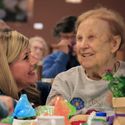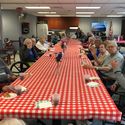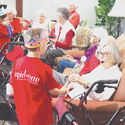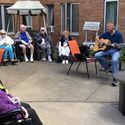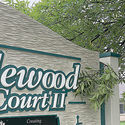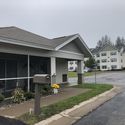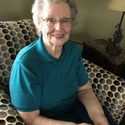As we age, housing arrangements may change
September 13, 2019
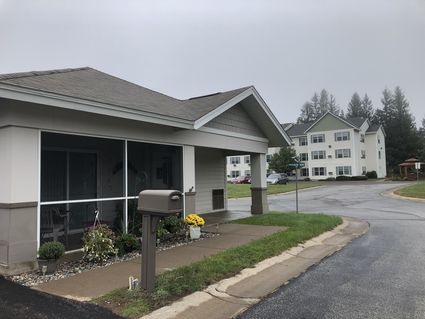
Jana Peterson
The Evergreen Senior Living campus includes cottages for independent living and both assisted living and higher-care suites in the large apartment building, so one can move through different housing options on the same campus as needs change.
Thanks to the Baby Boomer generation, the number of people 65 and older in the United States is expected to increase to 55 million in 2020. And, according to the AARP, by 2030 the population of adults aged 65-plus will reach 71.5 million.
That's a lot of seniors who may or may not be able to continue living in their own homes, on their own terms.
If you are one of these seniors or the child of one, now is the time to start talking about long-term care options.
Cloquet's Shirley Wirtanen, who is moving from a one-level senior apartment building to an assisted living apartment at Evergreen Knoll next month, said she has always let her kids know when it was time.
"Our whole family gets together at Big Lake and I told them this summer that it was time for me to move to assisted living," she told the Pine Knot. "It's too much for me to try to take care of an apartment and make meals with a walker. I'm 89 years old now."
If the elder family member isn't talking, AARP recommends a family member broach the subject with an icebreaker such as "I'm starting to think about my retirement options. Do you have any advice?" This gives a parent the opportunity to feel part of the conversation and share their wisdom but also opens the door to deepen the conversation with "What about you? As time goes on, do you think you will want to stay in this house? It might be difficult with all the stairs." Done in a loving way, a parent will feel part of the decision-making process. It also helps to stress the fact that it is their decision to make, but something you want to talk about.
AARP suggests having a "point person" to keep the process going and make sure other family members understand what's been decided for now or in the future.
In most families, one person assumes the primary role because he or she lives nearby, has a close relationship with the parent or simply is a take-charge person.
For Wirtanen, that person is her daughter, Kathryn. Wirtanen said she originally went to live with Kathryn in Anoka after her kids agreed they didn't want her living alone in her home in the countryside outside of Cloquet. But she didn't like the noise and bustle of the big city.
So Wirtanen moved to a home on Ninth Street in Cloquet and, 11 years later, then the Maplewood senior apartment building in 2011 when caring for the yard and home became too much. Now she is ready to take the next step, and looking forward to it.
"I'm the oldest person here, because the others have passed," Wirtanen said of the senior apartment building, adding that most of the other residents are 20 years her junior. "I want to be with more people my own age. With assisted living, they prepare the food; everything is done for you. Plus there's activities every day if you want to take part."
Not everyone is as fortunate as Wirtanen, whose brain is still functioning as usual and who would be "dancing the polka yet" if it weren't for her arthritis and macular degeneration.
Still, everyone will benefit from some advance planning, or at least a serious conversation while folks are still able to make those decisions.
As with most families, AARP says to expect some conflicts throughout the process as people will have different views on what is best for mom or dad (or mom or dad's pocketbook). Remind family members that this is their parents' decision, made while they were quite capable of making them. (Hence the need for a discussion early in the process while there is no question about mom or dad's ability to make said decision.)
It's also important to consider what kind of assistance might be necessary for one parent should the other pass away, AARP stresses. Would they be able to take care of daily activities on their own? Would they like to live independently or in a community setting? Do they drive? Can they take care of the bills and finances on their own? What are their alternatives to living at home?
Local options
The 2019 Carlton Senior Caregiver Guide produced by the Senior Reporter and Volunteer Services of Carlton County lists eight adult foster homes in Carlton County (offering fewer services, and a homelike setting with a homeowner or agency care), 20 assisted living facilities, six memory care housing options and three skilled nursing facilities for long-term care.
Wirtanen's next residence, Evergreen Senior Living, offers a campus approach that provides several housing alternatives, with the idea that one could progress through the different living options there.
Evergreen Cottages are independent homes for seniors on campus, one-level homes where the residents take care of their own needs, but don't have to shovel or mow or many of the other tasks that come with home ownership.
Evergreen Knoll apartments are assisted living apartments. Residents can be provided with all three meals, housekeeping, laundry, wellbeing checks, medication passes (from pill packs delivered to the room once a week, to passes up to four times a day with medications, depending on the person), some dressing help and very active programming. There are 39 assisted living apartments in the large building on campus, and Evergreen Knoll also provides additional services such as guest meals for an additional charge.
In all assisted living [facilities], there is some catering to individual client needs," Evergreen executive director Terri Langevin said. "But people have to have the cognition to make safe choices to qualify for assisted living. If the building's on fire, they have to know they need to get up and get out, for example."
For the next level of care, there are two different groupings of apartments - one on the first floor with 11 units, and 12 units on the second floor - known as Evergreen Suites.
The suites can serve someone with memory issues - the doors are locked and staff are trained in memory care - or someone who has higher care needs, such as toilet care, transfers and injections. The staff-to-resident ratio is higher in Evergreen Suites, Langevin said.
Langevin said there have been multiple instances of people moving into a cottage, then later to an assisted living apartment or into the suites.
"That's the idea," she said of the senior care campus. "We have even taken people to the end of life through hospice."
All levels
Assisted living options also run the gamut.
Diamond Willow Advanced Care Assisted Living serves those with higher-care needs seeking a less populated alternative. The custom homes are designed for fewer seniors (usually 10-13 per household) under one roof to allow for higher staffing ratios for seniors with memory, medical and physical care needs. Each home features a 1,000-square-foot great room/kitchen with a gas fireplace in the center, so residents can visit with each other and friends and family, rest in a recliner, enjoy coffee by the fire, or watch the birds.
Barnes Care Assisted Living in Esko - a local, family owned and operated, secure, state-of-the-art assisted living facility - offers a similar small setting where residents can live in their own rooms in a more family-like atmosphere.
One of the most well-known local options for skilled nursing is Sunnyside Health Care Center, a 44-bed long-term care facility connected to Community Memorial Hospital and overlooking the woods and the St. Louis River beyond. Many residents live there for years, while others will come there to recuperate after surgery and leave weeks or months later.
According to senior vice president Jeff Brown, Sunnyside Health Care Center is a skilled nursing facility providing clients with a full range of medical services including emergency, medical, surgical, nursing, nutrition, occupational, physical and speech therapy, life engagement, wound care, dialysis, pain management, cardiac rehab, social, behavioral and mental health services and more.
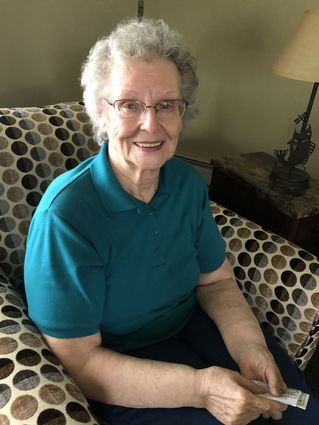
Jana Peterson
Shirley Wirtanen is 89 and has decided that it's time to move into an assisted living facility. Her family is lucky; she is independent and realistic about where she wants to live. Family members should start an ongoing conversation with older loved ones about future living arrangements.
"Sunnyside is known for the excellent care provided to each individual by the experienced and exceptional caregivers in all departments," Brown said. "Whether the need is short- or long-term, we have the skills and compassion to assist seniors in achieving a better quality of life."
Staff at Sunnyside encourage residents to bring personal items from home for their comfort and enjoyment, and they strive to create a warm, homelike atmosphere in the facility.
At the other end of the spectrum from skilled nursing, is home health care and living assistance that can help seniors "age in place" when they don't want to leave their homes.
Locally, Home Instead Senior Care's part-time caregivers provide in-home companionship, personal and respite care, nutrition and meal services, and assistance with transportation and household duties, allowing seniors to remain in their homes as long as possible.
Pine Knot News editor Jana Peterson contributed to this story.


